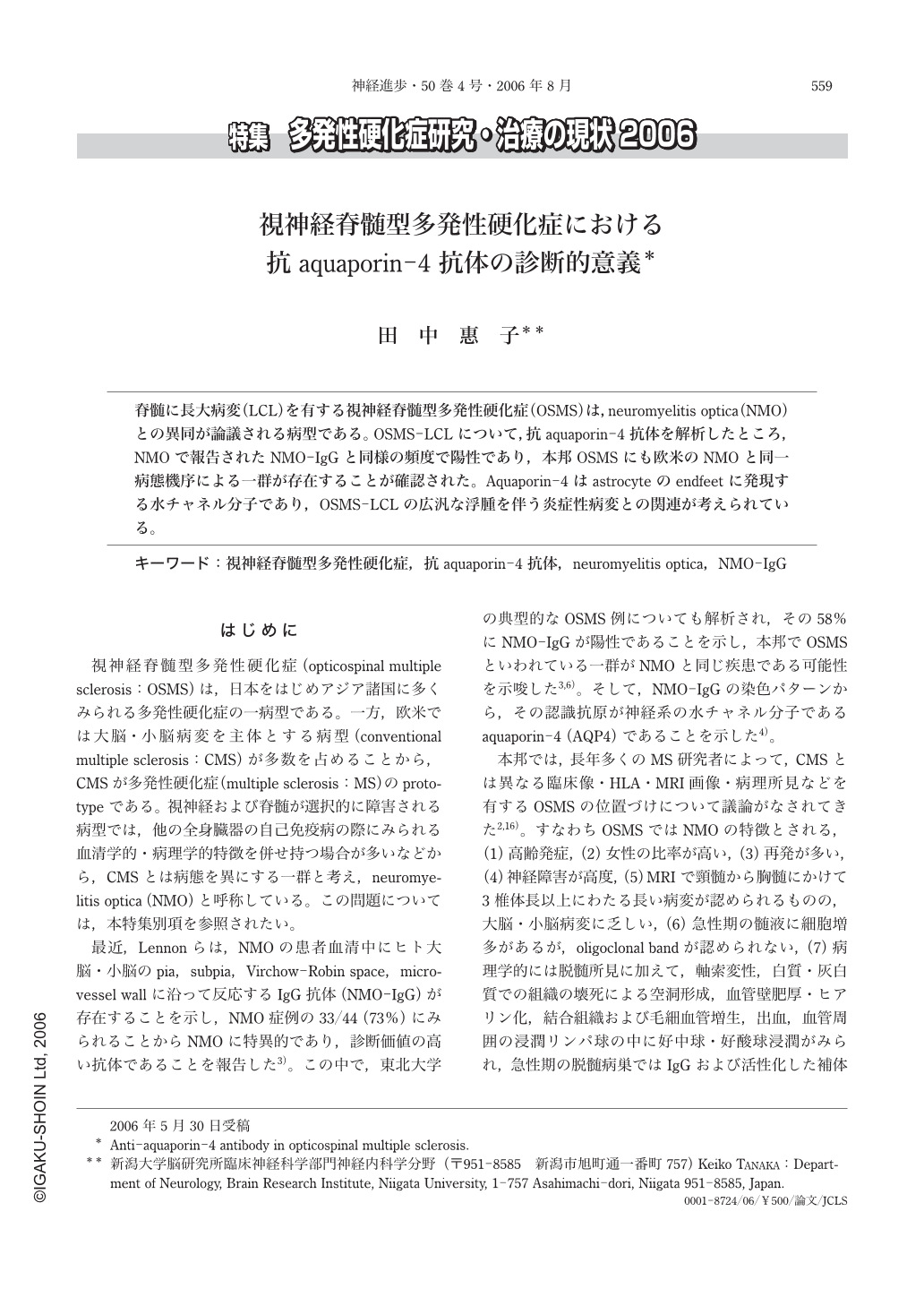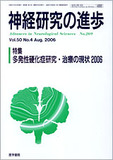Japanese
English
- 有料閲覧
- Abstract 文献概要
- 1ページ目 Look Inside
- 参考文献 Reference
脊髄に長大病変(LCL)を有する視神経脊髄型多発性硬化症(OSMS)は,neuromyelitis optica(NMO)との異同が論議される病型である。OSMS-LCLについて,抗aquaporin-4抗体を解析したところ,NMOで報告されたNMO-IgGと同様の頻度で陽性であり,本邦OSMSにも欧米のNMOと同一病態機序による一群が存在することが確認された。Aquaporin-4はastrocyteのendfeetに発現する水チャネル分子であり,OSMS-LCLの広汎な浮腫を伴う炎症性病変との関連が考えられている。
NMO-IgG, which binds to aquaporin 4(AQP4), is a specific marker of neuromyelitis optica(NMO). Because the Japanese opticospinal multiple sclerosis(OSMS)has very similar clinicopathological features to NMO, we established an immunohistochemical detection system for the anti-AQP4 antibody using AQP4-transfected HEK cells to clarify that NMO and OSMS have the same entity. Approximately 60% of the patients with OSMS with long spinal lesions(LCL), usually showing severe paraparesis with blindness, were positive for this antibody;those with OSMS without LCL or those with a conventional form of MS were negative. The frequency of anti-AQP4 antibody in OSMS-LCL was similar with those of NMO-IgG in NMO reported by Lennon et al. The role of anti-AQP4 antibody on the lesion development in OSMS or the reason for preferential involvement of optic nerve and spinal cord in OSMS is not yet elucidated.

Copyright © 2006, Igaku-Shoin Ltd. All rights reserved.


